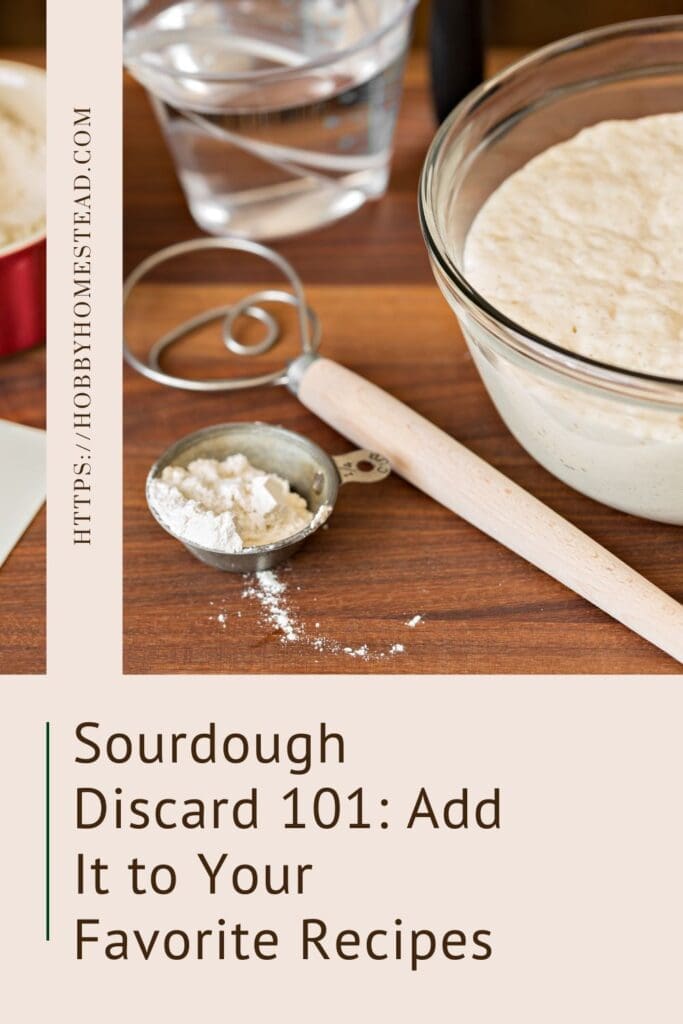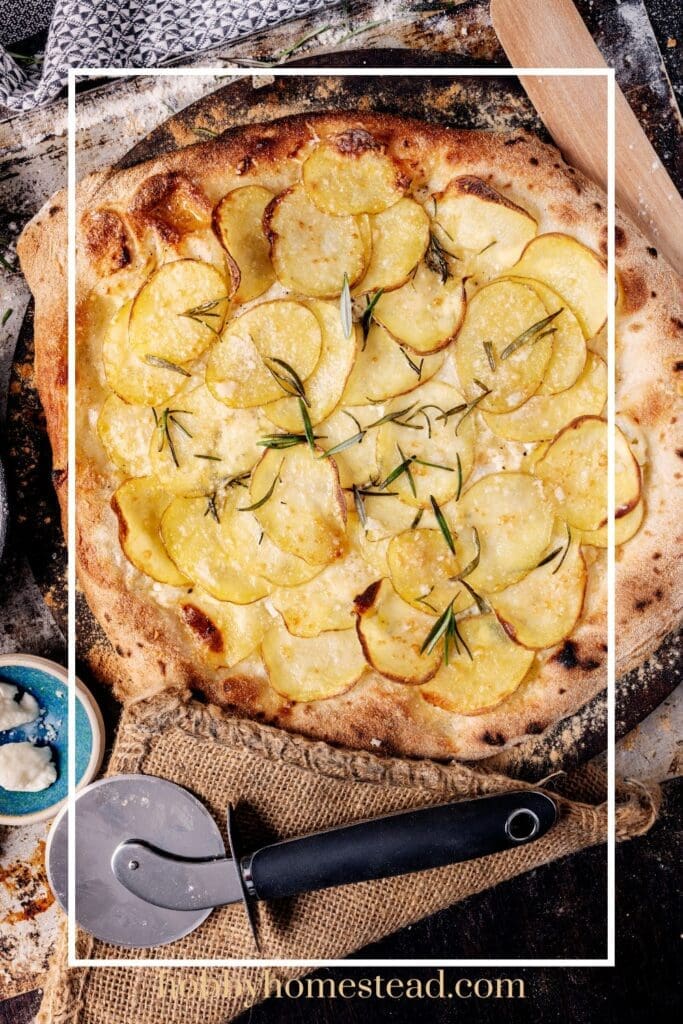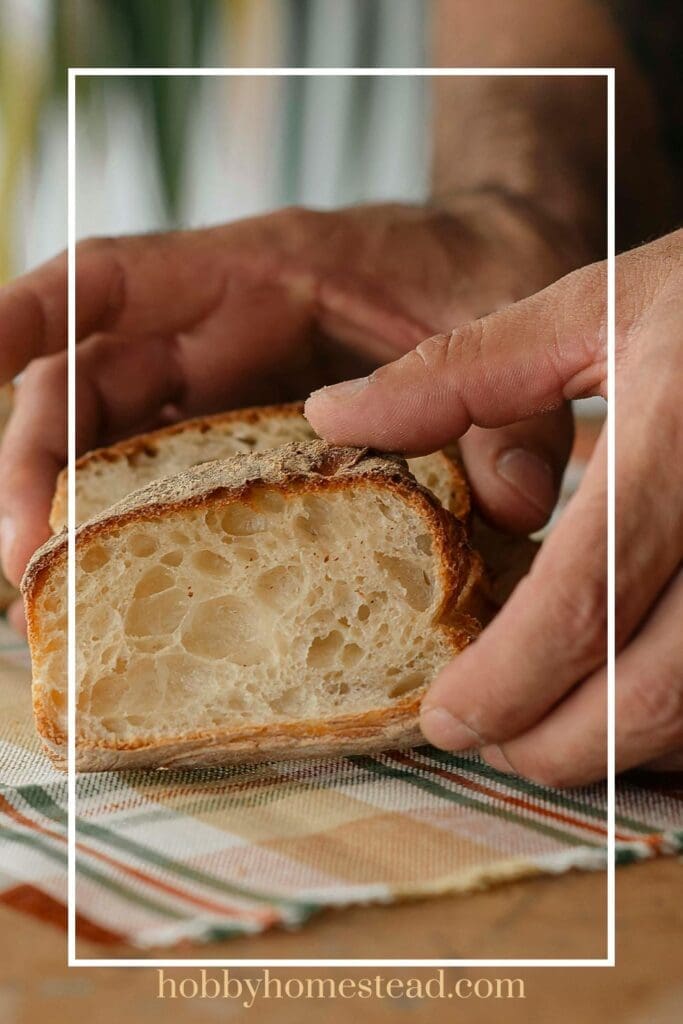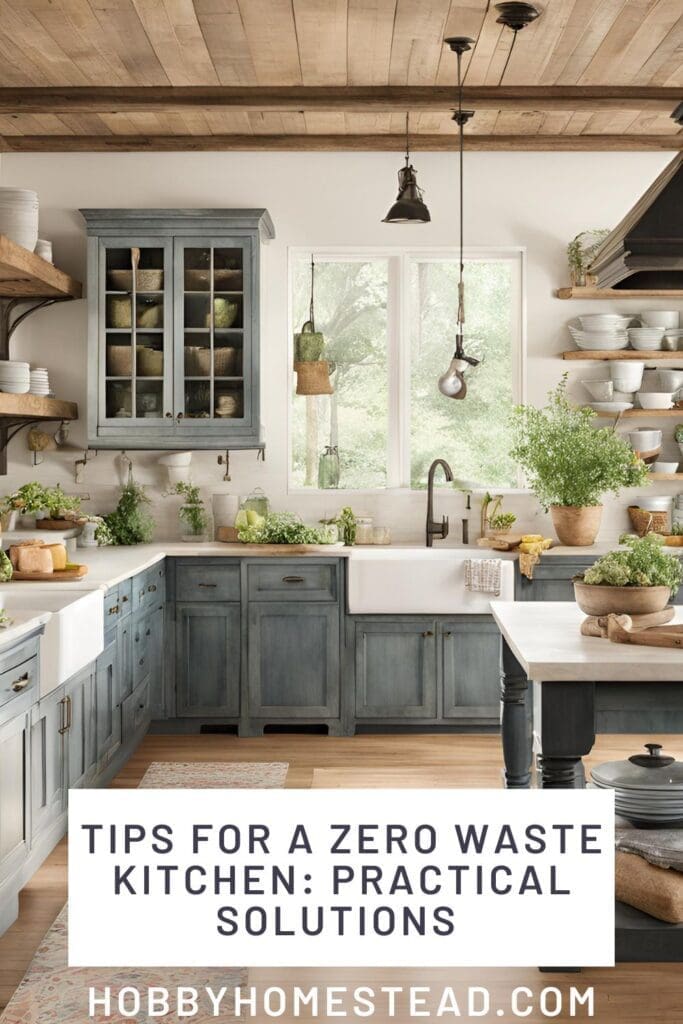Let’s talk about sourdough discard 101 and how to add it to your favorite recipes. If you’ve started your sourdough journey, you’ve probably run into the same question we all have. What do you do with all that sourdough discard?
On a homestead, where nothing goes to waste, tossing it just doesn’t sit right. The good news is, that tangy, fermented mixture is far from useless—it’s a versatile ingredient packed with flavor, beneficial bacteria, and the potential to transform your everyday recipes.
In this guide, we’ll show you how to work sourdough discard into your favorite recipes, from savory skillet breads to sweet treats and beyond. Whether you’re baking for the family, using up excess sourdough starter, or just looking for a great way to stretch your pantry ingredients, this is your go-to resource for using what you’ve got—right down to the last scoop of starter.

Add it to Your Favorite Recipes
Once your sourdough starter gets going, it doesn’t take long before you’re swimming in it. It grows with each feeding—like a good harvest—overflowing with potential.
It’s part of our rhythm now, like gathering eggs or soaking beans. And the good news is—you don’t have to bake bread every day to make the most of your starter. With a little know-how, you can add sourdough discard to almost any recipe. It’s a great way to use what you have, reduce food waste, and enjoy the health benefits of fermented grains without starting from scratch each time.
What Is Sourdough Discard, and Why Keep It?
Sourdough discard is the portion of your sourdough starter you remove before feeding the rest with fresh flour and water. It’s usually considered “unfed,” but it still contains wild yeast, beneficial bacteria, and a mild tangy flavor—making it perfect for baking and cooking.
For folks living a homesteading lifestyle, tossing good food isn’t an option. Discard is a versatile ingredient that brings rich, fermented flavor and added nutrition into your kitchen. Using it means less waste and more creativity.
Discard can be used in savory bakes, quick breads, sourdough pancakes, easy breakfast recipes, and even a chocolate chip cookie here and there. If you’ve got a cup of sourdough starter left over, you’ve got options.
The Benefits of Using Sourdough Discard in Everyday Cooking
Adding discard into recipes can:
- Reduce food waste and make the most of your excess sourdough starter
- Boost gut health with lactic acid and beneficial bacteria
- Add flavor depth and subtle rise from fermentation
- Stretch your pantry ingredients further by swapping in discard for some flour and water
Using discard is also a good way to bring in the benefits of fermented grains, even when you’re not making traditional sourdough bread. It helps lower phytic acid, which makes nutrients easier to absorb.
And let’s be honest—it’s just fun to use what you’ve worked hard to grow and feed.

How to Add Sourdough Discard to Any Recipe (The Homesteader’s Way)
You can’t just toss discard into a recipe and hope it works. You’ll need to adjust the amount of flour and amount of liquid to keep everything balanced.
Here’s the easiest way to think about it:
Replace equal parts of flour and liquid in your recipe with the amount of discard you’re adding.
So, if you’re adding 1 cup of discard, reduce:
- ½ cup of flour
- ½ cup of liquid (like water, milk, olive oil, or vegetable oil)
This simple swap keeps your dough or batter at the right consistency. Whether you’re baking up sourdough waffles, easy sourdough recipes, or adapting your favorite bread recipe, this method works well across the board.
🔢 Example
Original recipe: 2 cups of flour + 1 cup of milk
Using: 1 cup of discard
Adjust to: 1½ cups flour + ½ cup milk
What Recipes Work Best With Discard?
Here on the homestead, we like to make the most of what we have. That’s why discard finds its way into all kinds of meals and treats. You can use it in:
- Skillet quick breads
- Rustic sourdough Boston brown bread
- Easy breakfast recipes like pancakes, biscuits, and waffles
- Savory bakes like herbed crackers, sandwich buns, and skillet flatbreads
- Sweet things too—like cookie recipes, cakes, and muffins
Avoid using discard in recipes that rely solely on egg whites for structure or delicate pastries where precision matters. That’s where discard’s natural acidity and moisture could throw things off.
Discard Tips from Our Homestead Kitchen
- Store it right. Keep your discard in the fridge for up to 7 days. If you see fuzzy growth or an off smell, it’s time to compost it.
- Stir well. That dark liquid on top (called hooch) is natural. It’s just part of the fermentation cycle. Stir it back in unless it smells like paint thinner.
- Use by weight. When you can, use a kitchen scale. Flour weights vary, and measuring in grams of discard gives you more accuracy.
- Adjust with care. If your batter seems too loose, add additional flour. If it’s thick, you may need enough liquid to get the desired outcome.
- Try different flours. Use whole wheat flour, rye flour, or all-purpose flour (also known as purpose flour) depending on your needs.
Conversion for Swapping in Sourdough Discard
This method is based on Martha’s formula and Wordloaf’s rules, two trusted guides for balancing discard with regular ingredients.
When substituting sourdough discard in a recipe, the easiest way to get the right texture is to think in equal parts by weight. Because discard is essentially flour and water already mixed together.
As a general rule, for every ½ cup of sourdough discard you add, reduce the recipe by about ¼ cup of flour and ¼ cup of liquid.
If you’re using 1 cup of sourdough discard, cut back ½ cup of flour and ½ cup of liquid from the original recipe.
Need to use up a larger amount, like 1½ cups of discard? Just reduce the recipe by ¾ cup of flour and ¾ cup of liquid.
This simple calculation helps keep the balance of ingredients right and gives you the best results—whether you’re making pancakes, quick breads, or your favorite sourdough discard recipes.
Just remember, these adjustments are based on the idea that your discard is close to a 1:1 ratio of flour to water. If it’s thicker or thinner, you might need to tweak things slightly based on the consistency and desired outcome.
How long can I store discard? About a week in the fridge. Just watch for off smells or mold.
Can I use discard cold? You can, but room temperature discard mixes in more easily and gives more consistent results.
Will discard make my baked goods rise? Not on its own. It’s not an active starter, so you’ll still need baking powder, commercial yeast, or another leavening agent depending on the recipe.
Do I have to adjust every recipe? Only if you want best results. Start small, take notes, and tweak as needed. Your own terms are what matter most.

A Little Goes a Long Way
Whether you’re baking for a crowd or just making a small batch of sourdough pancakes, using discard is one of the best ways to stretch your resources on the homestead. It reduces waste, celebrates the sourdough journey, and makes use of that liquid gold sitting in your jar.
Next time you feed your starter, don’t think of the discard as waste—think of it as a bonus. Try it in your favorite recipes, from rustic biscuits to your first time making chocolate chip cookies with a sourdough twist.
Here on Hobby Homestead, we believe in using everything we grow, raise, and bake to the fullest. That includes your leftover sourdough starter.
References
King Arthur Baking Company. Adding sourdough to a recipe.


